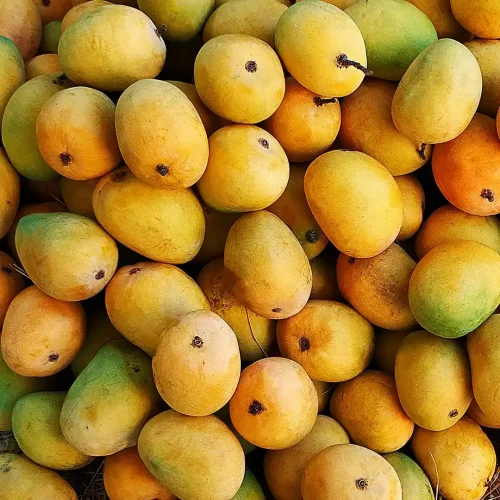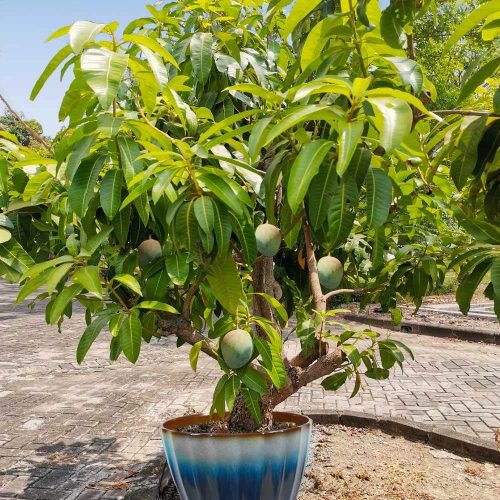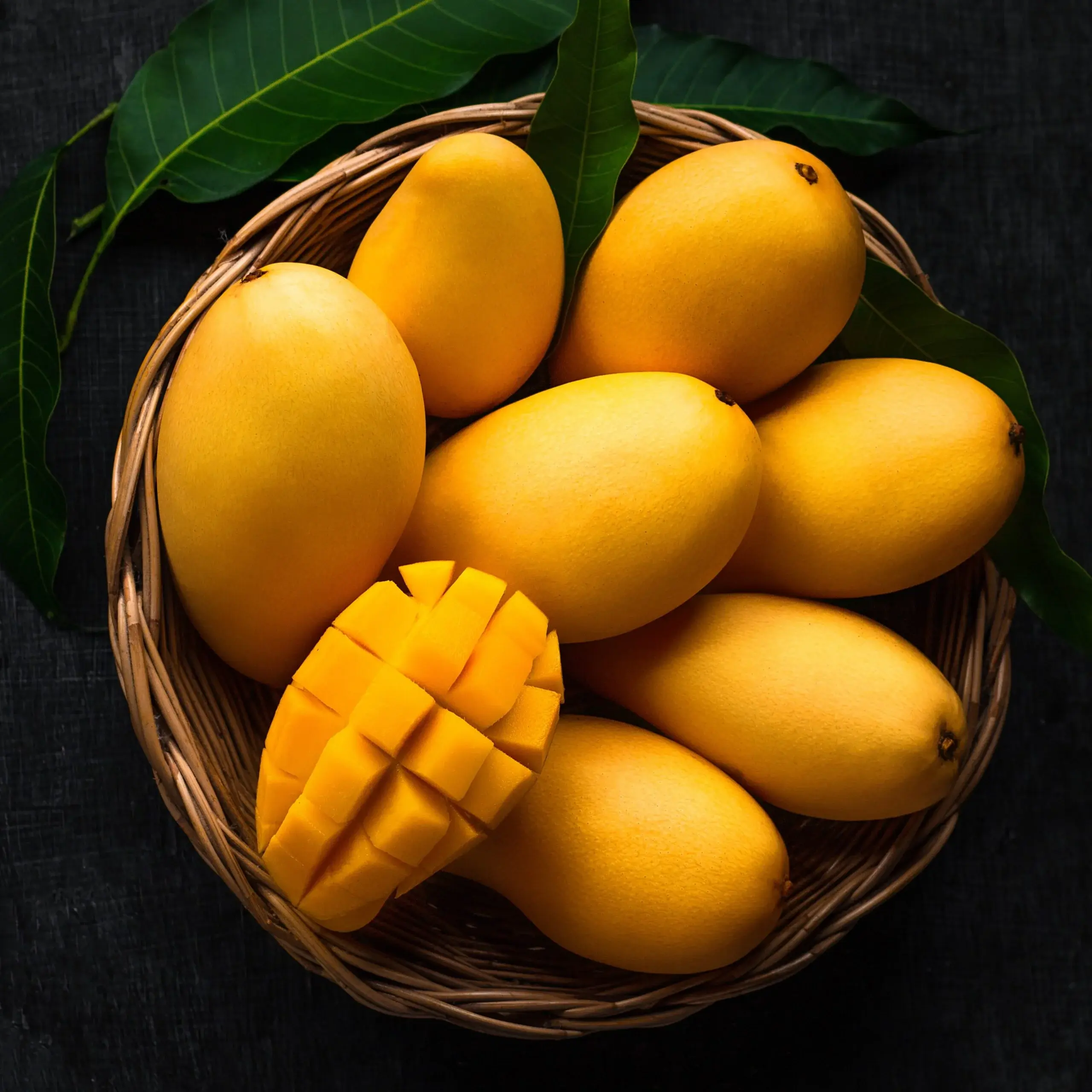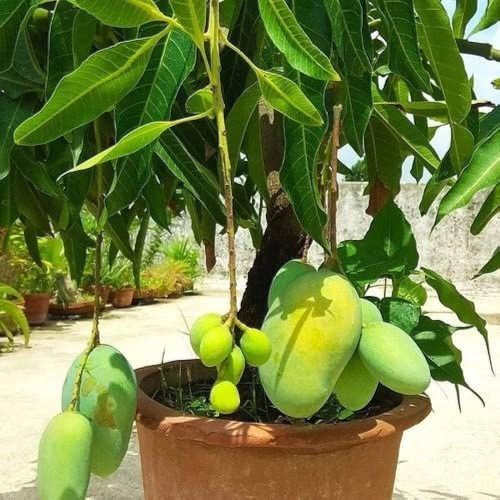Bright, golden, and bursting with flavour — there’s a reason the Kesar mango is called the ‘Queen of Mangoes’. Also known as the ‘Gir Kesar’, this prized variety from Gujarat is beloved for its rich aroma, vibrant golden-yellow skin, and irresistibly sweet, tangy taste that mango lovers around the world crave.
And here’s the best part—you don’t need a sprawling orchard to enjoy it. You can actually grow this royal fruit right in your own garden, even in a pot!
Why is Kesar mango so popular?
Kesar mangoes are renowned for their rich flavour, sweetness, and smooth texture. Grown primarily in the foothills of Girnar in Gujarat, the fruit has a distinct aroma and is typically smaller than other mango varieties, making it a true delicacy. It is the early season of ripening in late spring and early summer, along with its golden hue, that adds to its allure, making it a seasonal favourite.

Ideal growing conditions
- Temperature: Kesar mangoes grow well in tropical and subtropical climates with temperatures between 24°C and 35°C. They need ample sunlight and warmth, so it is important to check that your mango plant gets enough sun.
- Best months to grow: The ideal time to plant Kesar Mango trees is between February and March, just before the warmer summer months. During this period, the mango tree can establish itself in the pot and start growing.
- Location: While Kesar Mangoes can be grown in pots, they still need a sunny and warm location, preferably outdoors on a balcony, terrace, or any well-lit space. They require at least eight hours of sunlight each day.
Step-by-step guide to growing Kesar mango in a pot
1. Choose the right pot
Try to find a large and well-draining pot that is at least 18-24 inches in diameter and depth. Choose a pot with drainage holes at the bottom to prevent waterlogging.

2. Prepare a nutrient-rich soil mix
Use a well-draining potting mix rich in organic matter. A mix of garden soil, compost, and sand works well. This will give your mango tree the proper nutrients it needs.
3. Plant the seed or sapling correctly
You can either start from a seed or buy a grafted Kesar mango sapling from a reputable nursery. If starting with a seed, place it in the pot about 2-3 inches deep, with the pointy side facing down. If using a sapling, dig a hole deep enough to accommodate the roots and cover them gently with soil.
4. Water mindfully
Keep the soil moist but not soggy. Water regularly, especially during the summer months, but ensure the pot is well-drained to avoid root rot. During the winter, reduce watering for better growth.

5. Feed your plant regularly
Apply organic fertilisers, like compost or well-rotted manure, every few months. A balanced NPK (nitrogen, phosphorus, potassium) fertiliser is recommended during the growing season to promote healthy growth and fruiting.
6. Shape the plant
Prune the tree to remove dead or damaged branches and to shape it for better airflow. Pruning also encourages lateral growth, helping the tree grow stronger.
7. Support the growing tree
As the mango tree grows, use stakes to support the trunk and branches. This helps prevent them from bending or breaking due to the weight of the fruit.
8. Encourage flowering and fruiting
After 2-3 years, your Kesar mango tree may start flowering, typically around spring. During this time, place it in a location where it receives plenty of sunlight. Once flowers are pollinated, you will see fruit beginning to form.

9. Know when to harvest
Mangoes are ready for harvest when they are fully ripened and their skin turns a golden yellow. Depending on your location, this can be in the late spring to early summer months.
Tips for success
- Protection from pests: Keep an eye out for pests like aphids and mealybugs. Use organic pest control methods like neem oil to protect your plant.
- Temperature sensitivity: Mango trees are sensitive to frost. If you live in a colder region, bring the pot indoors during the winter months.
- Proper drainage: Always check whether the pot has good drainage. If water stagnates at the roots, the tree’s growth and fruit production will be severely affected.
Edited by Khushi Arora
No comments:
Post a Comment